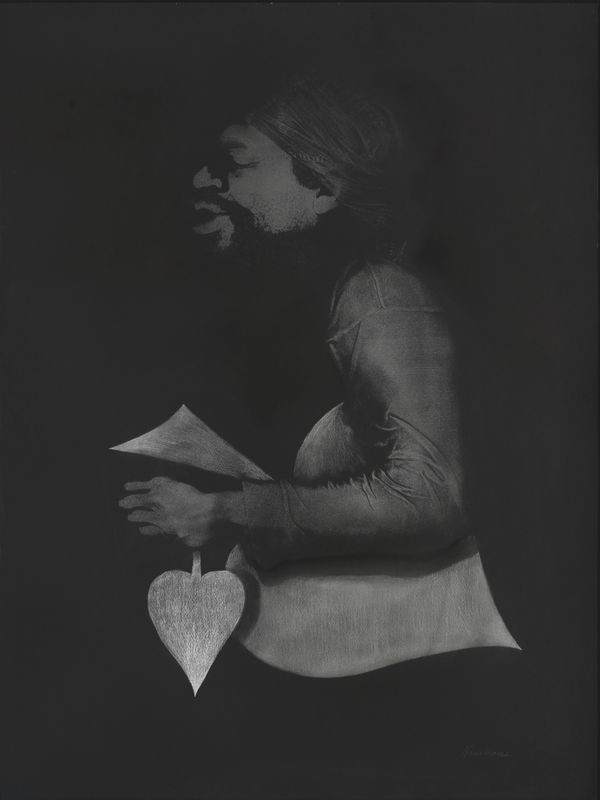
Now Dig This!: Art and Black Los Angeles 1960–1980 is one of the expanded digital archives you can peruse from home. Originally running from October 2, 2011 to January 8, 2012, Now Dig This! examined a group of Black artists who made work during the two decades that saw the rise of the civil rights and Black Power movements, giving birth to new conceptions of Black identity and culture.
One artist to come out of that moment was David Hammons, an artist who worked in Los Angeles and New York across a variety of mediums—sculptural, painting, and video. But the work he's best known for was his Body Print series. Hammons would lube himself up with grease and press his body onto paper, then sprinkle graphite to accentuate the mark his body made. These X-ray-like prints played with his identity as a Black man and explored stereotypes and the theme of citizenship.
The spade was a symbol that popped up in a lot of his art from the 1970s. In Three Spades, he references the type of spade you would see in a deck of cards and also the racial slur for Black people, which Hammons remembers being called. I love how much of Hammons is present in these prints—the bits of beard hair, his wrinkly clothes, the veins on the back of his hand. It's like he's physically in the gallery (or screen) with you, confronting the meaning behind the symbol the figure carries.
The expanded digital archive of Now Dig This!: Art and Black Los Angeles 1960–1980 is up indefinitely at the Hammer Museum—crack open a Trader Joe's cheese plate and a can of sparkling wine and enjoy!


















